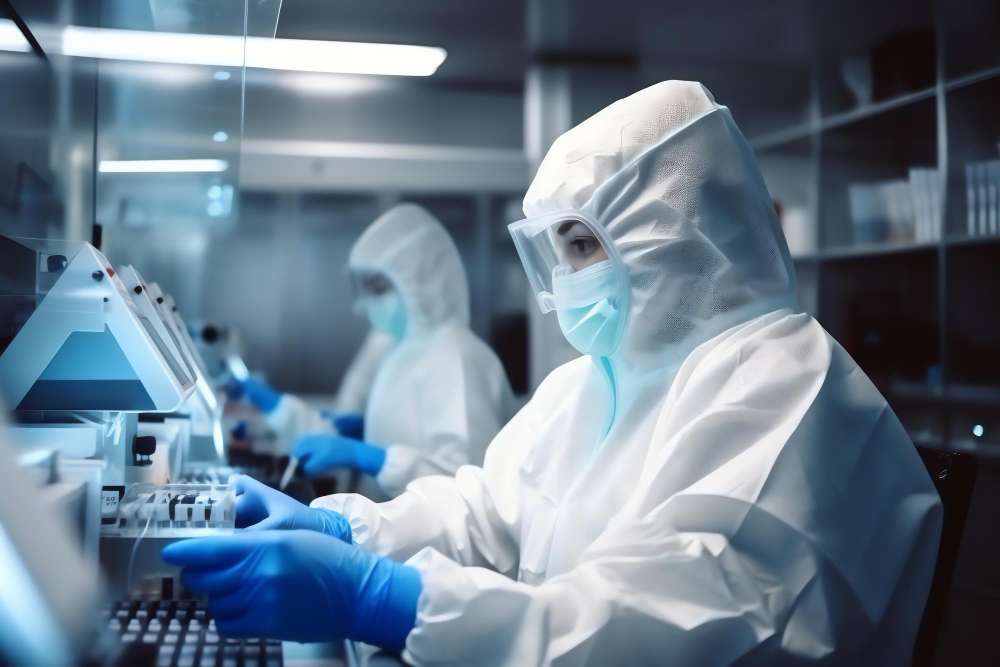In the dynamic realm of medical progress, there’s a buzz of excitement surrounding the discovery and exploration of new biomaterials. Researchers and scientists are driven by a shared passion to uncover materials with extraordinary properties, aiming to elevate medical treatments and procedures to new heights. From biodegradable polymers to super hydrophobic materials, each breakthrough holds immense potential to transform patient care and medical practices. Among these, super hydrophobic materials stand out as a particularly intriguing avenue of research, offering exciting possibilities for innovation in healthcare.
How are Super Hydrophobic Materials the game changer?
Super hydrophobic materials, with their unique water-repellent properties, are making waves in the healthcare sector. These materials boast a surface structure that repels water droplets, causing them to bead up and roll off effortlessly. In medical settings, super hydrophobic materials find diverse applications, ranging from medical devices to protective coatings. Their ability to repel water and other liquids makes them ideal for preventing contamination and facilitating sterilization. Additionally, their non-stick nature reduces the buildup of biofilms and facilitates easy cleaning, enhancing the safety and longevity of medical equipment. Moreover, these materials exhibit exceptional durability and chemical resistance, making them suitable for long-term use in harsh medical environments.
Medical Device Coatings:
Super hydrophobic coatings are increasingly being integrated into medical devices to enhance their performance and reliability. For example, catheters and endoscopes coated with super hydrophobic materials exhibit reduced friction and improved maneuverability within the body, leading to smoother and more precise procedures. Additionally, medical implants coated with these materials are less prone to bacterial adhesion, reducing the risk of infections and implant failures. Catheters coated with super hydrophobic materials minimize bacterial adhesion and biofilm formation, lowering the chances of urinary tract infections.
Surface Protection:
Operating room surfaces and medical equipment are often coated with super hydrophobic materials to prevent liquid absorption and microbial growth. For example, surgical tables coated with these materials repel fluids, ensuring a clean and sterile environment during procedures, thus reducing the risk of surgical site infections. These materials are therefore assisting surgeons to help achieve optimal surgery environment.
Drug Delivery Systems:

Super hydrophobic nanoparticles are revolutionizing drug delivery systems by enhancing drug stability, solubility, and targeted delivery. These nanoparticles can encapsulate hydrophobic drugs within their water-repellent shells, protecting them from degradation and enabling precise delivery to specific tissues or cells. This targeted approach minimizes systemic side effects and maximizes therapeutic efficacy, offering promising prospects for personalized medicine
Wound Dressings:
In wound care, super hydrophobic materials offer innovative solutions for promoting healing and preventing infections. Bandages and dressings treated with super hydrophobic coatings repel moisture and bacteria, creating a dry and sterile environment conducive to optimal wound healing. Moreover, these materials facilitate the controlled release of therapeutic agents, such as antimicrobial compounds or growth factors, to accelerate the healing process. Silicone-based wound dressings with super hydrophobic properties are particularly effective in managing chronic wounds.
Biocompatible Coatings for Implants:
Implantable medical devices, such as orthopedic implants or prosthetic joints, benefit from super hydrophobic coatings that improve biocompatibility and longevity. By minimizing protein adsorption and cell adhesion on the implant surface, these coatings reduce the risk of inflammatory responses and implant rejection. Furthermore, super hydrophobic coatings mitigate the formation of biofilms, enhancing the long-term performance and functionality of implanted devices.
Lab-on-a-Chip Technologies:

Super hydrophobic materials are integrated into lab-on-a-chip devices to manipulate fluids for diagnostic purposes. By controlling fluid flow and minimizing sample loss, these materials enable precise and efficient analysis of biological samples. For instance, microfluidic chips coated with super hydrophobic surfaces facilitate the detection of biomarkers for various diseases, offering rapid and accurate diagnostic results.
Harnessing the Potential of Super Hydrophobic Materials at Revive:
Incorporating super hydrophobic materials into the medical field presents unique challenges due to the complexity of their synthesis, compatibility with medical standards, and durability requirements. Achieving optimal material performance while ensuring biocompatibility and regulatory compliance is a demanding task. At Revive Medical Technologies, we leverage our expertise in material science and medical device innovation to harness the full potential of super hydrophobic materials. Through advanced research and development processes, we strive to overcome technical barriers and integrate these materials seamlessly into healthcare solutions, driving a revolution in patient care and medical device functionality.



